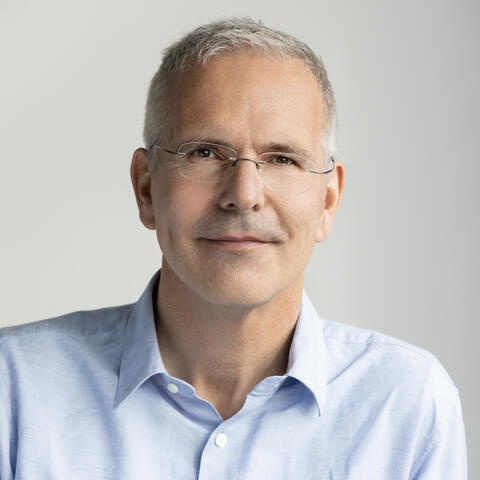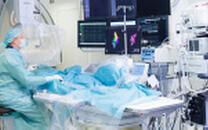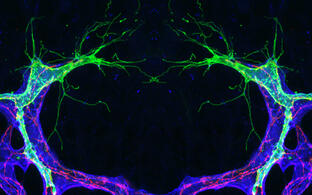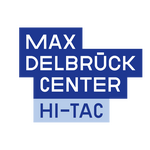
HI-TAC
Helmholtz Institute for Translational AngioCardioScience
About us
AngioCardioScience combines approaches from vascular research (Angioscience) and cardiac research (Cardioscience) and thus make an important contribution in the fight against cardiovascular diseases – for a healthier life in advanced years.
The HI-TAC was founded by the Max Delbrück Center together with the University of Heidelberg (UHEI) as a branch of the Max Delbrück Center on the UHEI campus.
Governance
- Norbert Hübner
-
© Pablo Castagnola, Max Delbrück Center
Norbert Hübner, M.D. leads the Genetics and Genomics of Cardiovascular Diseases Lab at the Max Delbrück Center and is Professor and Chair for Cardiovascular and Metabolic Sciences at Charité-Universitätsmedizin Berlin.
His work has opened up new avenues for understanding how genes and molecular networks influence heart failure. Dr. Hübner's research focuses on patient-derived cells and tissues, thus contributing to a better understanding of the genetic basis of human heart failure. His lab pioneered single-cell analysis of the human heart. Moreover, his researchers discovered that many RNAs previously annotated as non-coding are, in fact, translated into proteins. These short open reading frames in e.g. long non-coding RNAs, upstream or downstream UTRs (untranslated regions), produce novel microproteins with unkown functions.
Hübners team is investigating single cell sequencing data and novel microproteins to find new strategies for prevention and limitation of cardiovascular diseases.
- Johannes Backs
-
Prof. Johannes Backs is Director of the Institute of Experimental Cardiology at Heidelberg University, DZHK-Professor for Epigenetic Regulatory Mechanisms in the Heart and spokesperson of the CRC-1550 Molecular Circuits of Heart Disease.
Prof. Backs and his team investigate how environmental factors and comorbidities such as biomechanical or nutritive stress, obesity, or cancer signal to the cardiac genome and contribute to heart disease. He was among the first to uncover how histone deacetylases transmit stress signals to the heart genome. His research demonstrated that specific metabolic and inflammatory signals can cause cardiac dysfunction via these enzymes. For example, he discovered that lipid droplet-associated proteins regulate cardiac function by proteolysis of histone deacetylases, key regulators of O-GlcNAcylation and heart contractility. Currently, his team focuses on the etiology of diastolic dysfunction and systemic metabolic complications in cardiometabolic disease. As a consequence, his team has developed novel translational strategies that led to the startup Revier Therapeutics.
Prof. Backs serves as a member of several research committees and organizes conferences such as the EMBL conference The New Cardiobiology.
- Gergana Dobreva
-
Prof. Dr. Gergana Dobreva heads the Department of Cardiovascular Genomics and Epigenomics at the Medical Faculty Mannheim of Heidelberg University.
The main focus of her research group is to understand how epigenetic regulation governs cell fate and plasticity during normal development, postnatal growth, and pathological conditions, with a particular emphasis on the cardiovascular system and cancer. Mechanistically, her group investigates how specific gene expression programs are established in response to changing biochemical, biophysical, and cell-to-cell signals. Specifically, they explore the crosstalk between cellular metabolic states, mechanical forces, and epigenetic alterations in the development and function of the cardiovascular system, as well as in cancer. Their objective is to identify novel therapeutic strategies, particularly by targeting regulatory hubs that go awry in disease contexts.
Cardiovascular Genomics and Epigenomics: UMM Universitätsmedizin Mannheim
- Franziska Hasslinger-Pajtler
People
- Administration
- Scientific Co-ordination
Mannheim/Heidelberg
Berlin
- Contact
Research
The HI-TAC uses synergies for its research: it closely interlinks cardiovascular research programs of the Max Delbrück Center and University of Heidelberg (UHEI), which enables the development of new preventive procedures and causal therapies.
The HI-TAC research program aims at the following:
- Establishing an internationally leading role in the field of angiocardioscience;
- Fostering the early translation of HI-TAC discoveries into diagnostic and therapeutic applications
- Promoting synergy and coherence among a diverse range of stakeholders in AngioCardioScience in Germany
- Establish an education and training program that advances cardiovascular research and trains the next generation of leading scientific talent.
Junior Groups
- Cell communication to repair tissue
- Dr. Arica Beisaw
-
Arica Beisaw
© Tobias Schwerdt, Max Delbrück CenterDr. Arica Beisaw, Junior Research Group Leader at Heidelberg University, is exploring how cardiomyocytes regenerate after injury. In a healthy heart, cells work together to keep blood pumping. But when the heart is damaged, such as during a heart attack, the body often replaces the injured area with scar tissue made of collagen instead of new muscle cells. This scar tissue doesn't contract like healthy heart muscle, which can weaken the heart over time and lead to heart failure.
A major focus of the team`s research is on uncovering the transcriptional and epigenetic networks that guide heart regeneration. Transcriptional networks involve the way genes are turned on or off, while epigenetics refers to chemical modifications that affect gene activity without changing the DNA sequence itself. Affiliation with HI-TAC will strengthen another focus of the lab: how heart cells communicate with one another – or intercellular communication – to coordinate the repair process. The group is particularly interested in how these signals help new cardiomyocytes grow and repopulate areas of the heart that have been damaged and filled with collagen.
The lab is planning several projects to understand the spatial distribution of cell-to-cell interactions at the wound border zone. They will also engineer systems to be able to observe these interactions and study their importance during the repair process.
- How heart cells cope with extra DNA
- Dr. Chi-Chung Wu
-
Chi-Chung Wu
© Tobias Schwerdt, Max Delbrück CenterDr. Chi Chung Wu, Junior Research Group Leader at Heidelberg University, has been investigating a mysterious feature of heart cells: polyploidy – a condition where a cell contains more than the usual amount of DNA. Most of the cells in our bodies are diploid, meaning they carry two copies of each chromosome, one from each parent. But in some organs, including the heart, certain cells can become polyploid, carrying extra copies of their genetic material. This can happen naturally during development, in response to injury, or as part of the aging process.
Wu`s junior research group is specifically focused on understanding the biological signals and mechanisms that regulate polyploidy in heart cells. The group is also exploring how this extra DNA affects the cells’ ability to function and regenerate. His affiliation with HI-TAC will provide greater opportunities for collaborative research with experts in cardiovascular biology, immunology, cell biology as well as clinicians, he says. “These interactions will strengthen our research on how intercellular communication influences cardiomyocyte polyploidization and help translate our findings in the future.”
- Blood vessels and circadian rhythms
- Dr. Mahak Singhal
-
Mahak Singhal
© Tobias Schwerdt, Max Delbrück CenterThe team of Dr. Mahak Singhal, Junior Research Group Leader at Heidelberg University, explores the function of blood vessels. Researchers have found out that blood vessels are more than just conduits for transporting nutrients, oxygen, and waste products. The also send signals that maintain the body’s homeostasis. At the same time, blood vessel dysfunction can support the development of diseases like cancer and chronic inflammation.
Singhal`s team takes a cross-disciplinary approach to understanding this dual role of the vascular system. One of its goals is to figure out how blood vessels behave differently in different organs. The researchers are particularly focused on identifying the early molecular triggers of disease. “We still don’t know if there is a particularly sensitive vascular population that when perturbed, results in the initiation of disease”, says Singhal.
Now as part of HI-TAC, the junior research group is also studying circadian rhythms and how endothelial cells adapt to the daily oscillations in environmental stimuli. For example, people generally eat only at certain times during the day, he explains, but not at night. That means the liver for one is more active during the day. Singhal and his team plan to investigate how blood vessels dynamically adapt to support this daily change in organ function.
- RNA splicing errors and heart disease
- Dr. Maarten van den Hoogenhof
-
Maarten van den Hoogenhof
© Tobias Schwerdt, Max Delbrück CenterThe group of Dr. Maarten van den Hoogenhof, Junior Research Group Leader at Heidelberg University, studies RNA splicing and how this affects the heart. Much of the team`s research over the past several years has specifically focused on how mutations in the RBM20 gene cause arrhythmogenic dilated cardiomyopathy (ADC), a severe type of heart disease. RBM20 codes for a protein that binds to specific messenger RNA sequences and influences how they are cut and joined together – a process called RNA splicing.
When our cells build proteins, they first create a copy of the gene in RNA. This RNA includes both protein-coding sections, called exons, and filler sections called introns that are removed. RNA splicing is a step where the cell cuts out the introns and joins the exons together to create the final instructions for making a protein. Mutations in the RBM20 gene lead to faulty splicing and consequently, faulty protein.
Van den Hoogenhof and his colleagues have been working to understand the mechanism of how this faulty splicing causes ADC. Now that they have joined HI-TAC, they are collaborating more closely with Max Delbrück researchers Professors Norbert Hübner and Michael Gotthardt, who both study cardiovascular disease. “We now have a much better understanding of how mutations in RBM20 lead to ADC,” says van den Hoogenhof, who is working on developing treatments. Based on their findings, his lab is now testing novel therapeutics to treat ADC.
Tandem Teams
The overarching goal of the HI-TAC is to build expert networks from different fields of translational AngioCardioScience. In order to promote interdisciplinary cooperation, the HI-TAC has launched a series of tandem projects that bring together scientists from the medical faculties Mannheim and Heidelberg of Heidelberg University (UHEI) and the Max Delbrück Center to further advance research:
HI-TAC Adjunct Faculty
The HI-TAC Adjunct Faculty tandem projects connect established research groups from the Max Delbrück Center with experienced partners from Heidelberg University.
Currently, eight collaboratively developed, innovative projects focusing on the communication of cardiovascular cells with each other and with their environment are being funded in order to intensify interdisciplinary exchange and close collaboration between the two sites. In doing so, HI-TAC specifically supports the creation of innovative synergies that enhance scientific excellence and enable long-term, sustainable cooperation between the locations.
HI-TAC Early Career Investigators
The HI-TAC Early Career Investigators project is an initiative specifically aimed at early-career researchers in the field of AngioCardioScience.
The goal of the program is to bring together promising talents from the Max Delbrück Center and Heidelberg University, foster professional exchange, and to provide them with financial support for the implementation of their own research projects. Through this funding program, HI-TAC creates a platform for creative ideas and actively strengthens the next generation of scientists.
Core Facilities
Our partner institutions offer established core facilities and scientific support services, providing excellent infrastructure and assistance for a wide range of research activities.
For more information, please see here:
- Scientific Infrastructure | Max Delbrück Center
- CFPM: UMM Universitätsmedizin Mannheim
- Core Facilities and Central Units: Heidelberg Faculty of Medicine
Physician Scientists
The Physician Scientist Program at HI-TAC, supported by funding from the Carl-Zeiss Foundation, provides an advanced training environment for clinical investigators specializing in vascular biomedicine, systems biology, and cardiovascular research. The program grants Physician Scientists two years of protected research time in addition to secured clinical training at Heidelberg University (UHEI), Heidelberg University Hospital (UKHD) and University Hospital Mannheim (UMM)
Learn more about the program and the opportunities it offers at Physician Scientist Programm am HI-TAC | Carl-Zeiss-Stiftung.
Career
Jobs
As a growing research institute within a lively and international scientific environment, HI-TAC welcomes dedicated and curious researchers at all career stages who would like to help shape its future. If you share our passion for AngioCardioScience, we look forward to receiving your unsolicited application.
PhD program
HI-TAC highly values the training of early-career researchers. Therefore, we are currently developing the School of AngioCardioScience, a structured graduate program that provides doctoral candidates with comprehensive academic training. In addition to courses on essential scientific skills, the School of AngioCardioScience aims to integrate knowledge from vascular and cardiovascular research to offer doctoral candidates thorough training in both fields. With this program, we aim to optimally support early-career talents and assist them in their scientific and personal development.
Internships
HI-TAC is always pleased to meet motivated researchers and early-career talents. If you are interested in an internship, please feel free to send us an unsolicited application.
Talent and Career Development
HI-TAC Early Career Investigators
The HI-TAC Early Career Investigators project connects early-career researchers from the Max Delbrück Center and Heidelberg University in the field of AngioCardioScience. It enables emerging scientists to realize their own innovative ideas by successfully obtaining funding, thereby actively laying the foundation for their scientific careers.
Physician Scientist Program at HI-TAC – funded by the Carl Zeiss Foundation
The Physician Scientist Program at HI-TAC offers scientifically interested physicians the opportunity to combine their clinical and scientific training, thus creating a bridge between bench and bedside. Participants in the program benefit from the scientific expertise of Heidelberg University and the Max Delbrück Center, as well as the long-standing clinical experience at Heidelberg University Hospital and University Hospital Mannheim.
Diversity and equal opportunity
News & Events
Event
In the media
Location & Directions
Find our locations here:
HI-TAC Mannheim
Ludolf-Krehl-Straße 7-11
68167 Mannheim
Location on Google Maps
Location on OpenStreetMap
HI-TAC Heidelberg
c/o Institut für Experimentelle Kardiologie
Eppelheimer Straße 8
69115 Heidelberg















